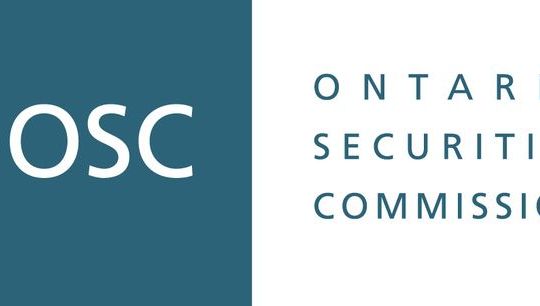The evolving scope and application of ‘Disqualified Lender’ lists
By Sydney P. Levinson; Mitchell Carlson, Debevoise & Plimpton
Published: 18 November 2024
Most syndicated loan documents allow the borrower to designate certain entities as ‘Disqualified Lenders’ that are prohibited from acquiring the debt in the secondary market. Historically these provisions received little attention from syndicated lenders, as they were designed and utilised primarily to prevent competitors of the borrower, or other entities with competing business interests (such as owners of competitors), from acquiring the debt and then using that position to obtain access to the borrower’s confidential and proprietary information—or worse, exploiting the ownership of debt to behave in a manner harmful to the borrower. To prevent this, the borrower would, at or before the time of the closing of the loan, generate a list of Disqualified Lenders (a DQ list) that would be shared with the agent and that would be fixed for the duration of the loan. Typically, the loan documents provide that any assignment or transfer of a loan to an entity identified as a Disqualified Lender is void ab initio, as a means to ensure that lenders do not slip through the cracks of the DQ list.
Over time, borrowers in the syndicated loan markets have expanded the scope of DQ lists to include entities other than competitors (and their owners). Now, such lists also regularly include distressed investors who are perceived to be overly aggressive in their dealings with borrowers and their sponsors. This expansion takes the form of including in the definition of ‘Disqualified Lender’ catch-all language that attempts to classify “any person whose primary activity is the trading or acquisition of distressed debt” as a Disqualified Lender. Or it may include a DQ list with hundreds of names included.
In addition to expanding the scope of entities included in DQ lists, borrowers and their sponsors now regularly negotiate for the right to amend and supplement the list of Disqualified Lenders after the closing date. While these post-closing updates to the DQ lists may not apply retroactively to disqualify existing holdings of lenders in the syndicate, they may apply to future acquisitions by such lenders. The added flexibility of being able to update the DQ list offers borrowers and their sponsors additional control and influence over the roster of potential investors in the borrower’s debt.
It is understandable why borrowers and their sponsors would want to exclude, as holders of debt, entities with interests perceived to be contrary to theirs. That said, the trend to expand the scope and application of DQ lists has various consequences for the syndicated loan market and its participants. One example is the impact on liquidity of such loans in the secondary market by eliminating a large swath of potential purchasers. It is not clear that lenders who purchase the debt when issued are pricing in the risk of reduced liquidity and the corresponding effect on their ability to unload the debt if it later becomes distressed.
Another potential consequence of widespread adoption of expansive DQ lists and provisions is to discourage a distressed investor from engaging in overly aggressive behaviour in an isolated situation, knowing that such conduct might lead to blacklisting of that investor in future issuances of debt. Obviously, the overall size and importance in the market of the sponsor or debt investors will impact whether the threat of blacklisting is meaningful, but it nonetheless provides a mechanism to deter what may be perceived in the market to be uncommercial behaviour by investors.
The evolving use of DQ lists has also resulted in controversy as borrowers and sponsors utilise DQ lists and provisions in ways that debt investors’ view is unfair and impermissible. Litigation has already occurred in multiple cases such as Byju’s and Serta. Byju’s,1 a matter pending in New York state court, involved the company asserting that Redwood Investments LLC was a Disqualified Lender due to its “primary activity [being] the trading or acquisition of distressed debt.” In Serta, which involved a dispute between the company and an affiliate of Apollo, the parties ultimately entered into a settlement pursuant to which 50% of the US$186 million of loans allegedly assigned to a Disqualified Lender were cleared (i.e. such assignment was permitted), while the attempted assignment of the other 50% were “deemed null and void.”2 These early cases, which arose from disputes over the scope of assignment limitations in the relevant credit agreements, shine a light on the controversies that can arise in this evolving area of syndicated loans, and highlight the importance of well drafted loan documents that clearly outline what is and is not permitted.
The expansion of DQ lists raise other questions, such as whether administrative agents - who are often responsible for maintaining a borrower’s DQ list, and confirming with potential investors that they are not included on such lists - should have any liability in connection with such DQ lists if they, for whatever reason, assure a potential investor that they are not included on the list, if such assurance is later proven to be untrue. Typically, administrative agents have the benefit of provisions in the credit agreement that hold harmless or indemnify them from liability for their missteps, absent especially egregious circumstances. The absence of liability on the part of the administrative agent, coupled with provisions in the loan documents that strip Disqualified Lenders who have nonetheless become a holder of a loan with certain rights and remedies (such as reduced information rights, exclusion from indemnification rights provided to other holders, and the exclusion of such a holders loans in calculation ‘Required Lenders’), can have the result of leaving good faith purchasers holding loans they would not have otherwise purchased and no remedy for their unfortunate investment.
Market participants may consider adopting provisions to mitigate the harsh outcome that might result if an entity who is unknowingly on a borrower’s DQ list purchases the borrower’s loan. As an alternative to deeming such transfers and assignments void ab initio, drafters may consider providing the borrower other less exacting remedies, such as redeeming the loan at the price paid by the purchaser (plus accrued interest) or providing the borrower the right to force such purchaser to sell the loan in the market to an eligible assignee. Such provisions could soften the blow for the unknowing purchaser while preserving, for the borrower and its sponsors, the benefit of its DQ list.
Other questions, such as whether aggressive uses of DQ lists can lead to claims related to the duty of good faith and fair dealing, or whether antitrust laws can limit the enforceability of certain assignment restrictions, are bound to arise if the trend of borrowers and their sponsors using DQ lists more strategically and aggressively continues on its current trajectory. Potential investors - especially those investors who could arguably be captured by the definition of Disqualified Lender without being specifically included on the list of such parties (i.e., captured by catch-all language in such definitions that attempts to include “all persons whose primary activity is the trading or acquisition of distressed debt”) - should be cognisant of such risks prior to investing in a loan that includes such a broad definition. Borrowers and sponsors, on the other hand, should be cautious about utilising DQ lists too aggressively in order to minimise the risk of potential litigation that can be both costly and distracting.
1. See Byju’s PTE. LTD. et al v. Glas Trust Company LLC et al., No. 652717/2023 (Sup. Ct. N.Y. Cnty. Jun. 5, 2023).
2. See Serta Simmons Bedding, LLC, et al., v. AG Centre Strreet Partnership L.P., et al., Adv. No. 23-09001-ADV (Bankr. S.D. Tex. Feb. 14, 2023).
The evolving use of DQ lists has also resulted in controversy as borrowers and sponsors utilise DQ lists and provisions in ways that debt investors’ view is unfair and impermissible.










